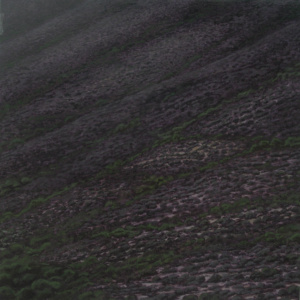On how to see these mute tissues growing.
Observations on Miguel García Cano´s pictorial series «El Silencio.»

Landscape, as a pictorial genre so far ruled by the need to represent a space discovered (or perhaps to be discovered), where the project to register the world, to appraise the land in measured and classified pieces of property either accessible or unaccessible has been submitted here to a reorganization proposal. Without any vanishing points or vectors, without any explicit elements ordaining the perspective, the eye is committed here to go through the skin of the represented territory. Without any dominant line of projection at a distance, that phantasmagoria that is a desire to represent overturns toward relief, toward the pulsations of the land remembered.
Orography, as an abstraction designed to operate like a means for visual knowledge, is transfigured here into its final mission, and the art of painting returns to its pre-topographic raison d´etre. Here, the painting hand renounces to any strict terms of depth; it rather establishes the impression of tactility in the reliefs to which it adapts itself, and the absence of codes of plane rupture demands an uninterrupted connection of tangential points. In an era of no materiality, the continuum of seen matter is restored and, in a context of public art, Miguel García-Cano puts into practice a relation of absorption and pensiveness, in which the glance is away from any reachable meaning.
As topos, the skin is both the temporary and spatial term of a desire to see, as well as the point where all eyes converge. In order to re-organize the «Silencio» landscapes, a statutory law has been recovered by arranging a series of spots without any centrality. The landscape grows from an undetermined origin and the amiable and anthropic mountain (field of representation in a literal sense) unfolds itself in a movement that is uniform and ample. No line of force wants to be put under an obvious logic of composition. Also, the development of the zones of color is produced here by recreating (rather than simulating) the apparent naturalness of a cellular tissue at its own phases of reproduction.
The canvass, bearing the technical process of creation, as well as the sublimation of Nature in a visual device, is prompted here to return to a category near the liveness and, as an organic medium for representation, its aspires to an involution toward the tissue that is the world´s physiological skin. Is this an attempt to restore a primeval relation? Perhaps. Art is a constant demise of its own experience. Is this a purification, an exercise in renunciation? Surely, but… Is this the symptom of a new pictorial beginning by Miguel García Cano?
It is just silence. These landscapes, tattooed on the skin of the world as if such skin was the condition to paint, renounces reverberation. The dense and continuous growth of the tissue seems to make any echo impossible and the voices of the forms, emerging like images, are re-sent to their own senses. When the space of transmissions is abolished, the signifiers are sunk in the same relief that welcomes them. If no type of essence is proclaimed, the signifiers refer us only to their original thickness as images. It is in that radical, dense and opaque continuity where we see the silence growing.
Traducción: Manuel García Castellón